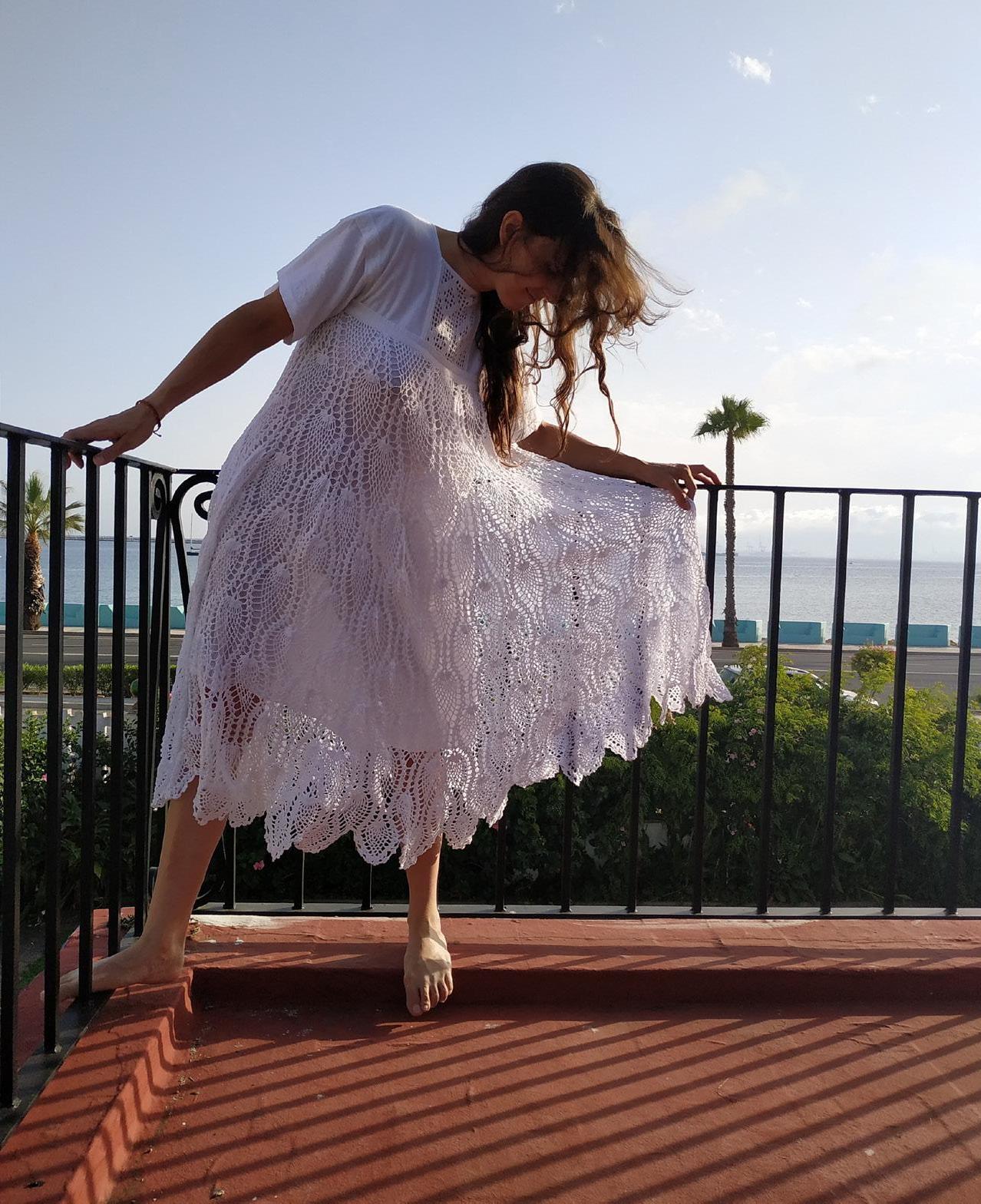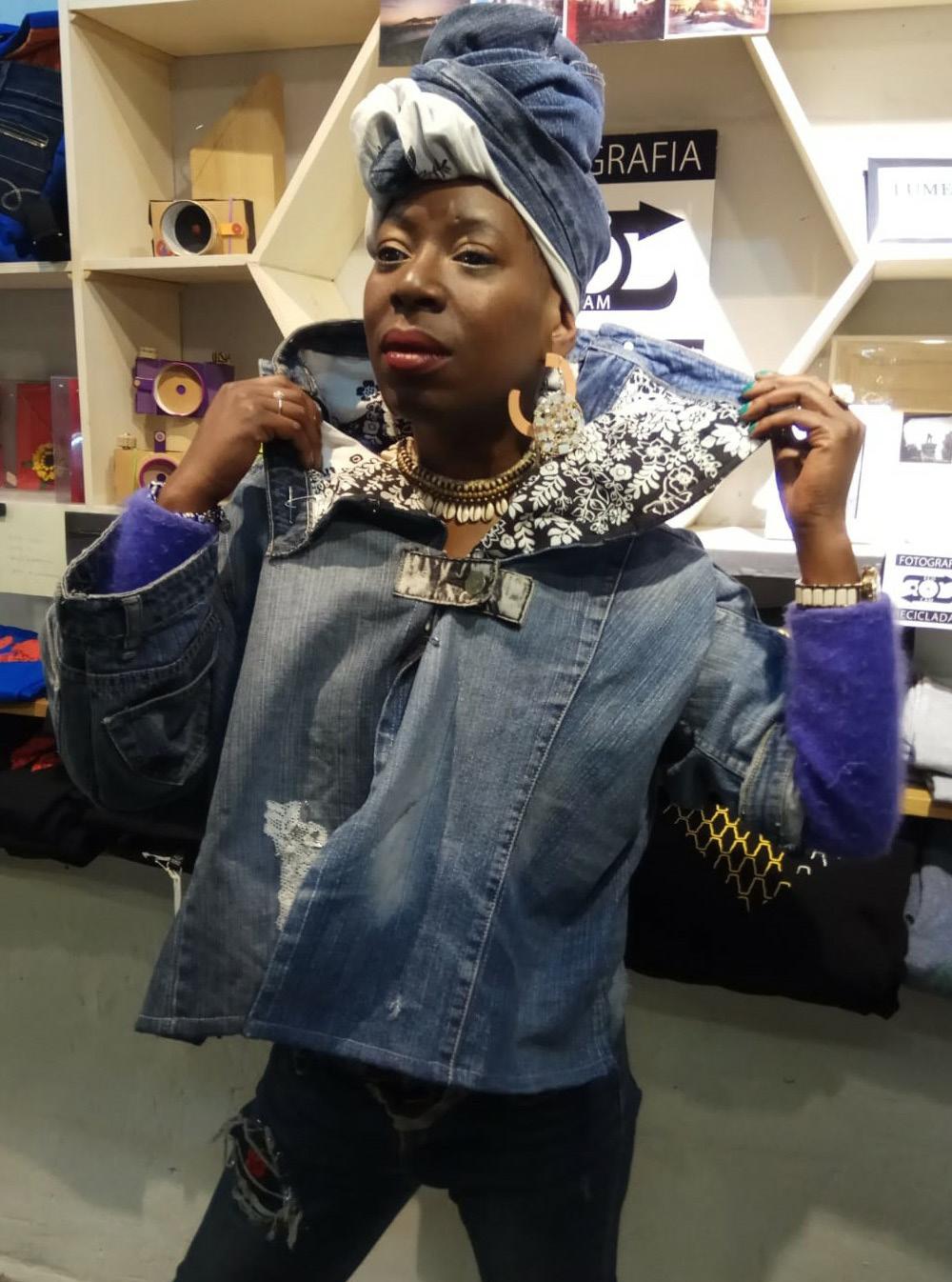
4 minute read
Trashion Talia: Recycling Fashion
TRASHION TALIA Upcycling fabric since her childhood, since well before sustainable fashion came into fashion, Talia Langdon is the founder of cottage industry TaliaFarfalia, a label that produces bi-annual collections of unique handmade garments made of second-hand clothes.
BY ELENA SCIALTIEL
The originality of Talia’s artwork stands in the fact that by no means she attempts to disguise or conceal any pre-loved fabric’s original cut, but she actually flaunts previous tailoring by including in the new design collars, pockets, sleeves, and buttons, yet artistically shifting their original function and making them a focal feature.
For instance, collars become sleeves or side pockets when an old shirt is recycled sideways or upside down. Or, two shirts in different but colour-matching patterns sewn together end-toend lengthways are hey presto! upgraded to a funky top. The wearer slots her arms through the have-been collars at opposite sides, while the original and still operational fastening line crosses her torso from elbow to elbow, making it the must-have accessory for breastfeeding mothers, because it conveniently flaps open at the touch of a button! strips and scraps are threaded together and become yarn for woven and knitted detailing, like waistbands, belts and ‘trashy’ handbags with the hippie twist. New styles are devised by gazing at old clothes from the odd angle, and musing how shapes, colours, prints and patterns can be tweaked around, best combined and reassembled, and fully handmade by what Talia describes as ‘slow fashion’.
The trendy term for this artisanship is ‘trashion’, a portmanteau of trash and fashion, and the trend is indeed gathering momentum with trashionistas, fast
fledging from sideshow oddity to a full craft in its own right. “I started in my teenage years, making coats out of my brothers’ old corduroy trousers, and soon my friends would bring me their own old stuff and ask me to turn it into something new,” Talia tells how child play blossomed into lifelong passion and commitment to zero waste and circular economy.
And so her trademark jeans coat was born, of which she produces several permutations every autumn, using old denims of all colours and lengths, paired with old woollies or sweatshirts and anything that can provide colourful lining. From the stark black-jean and ethic-style lined coat to the casual bluejean biker jacket, this evergreen wardrobe staple has been endorsed by several fashionistas, including jazz singer Shirley Davis of Silverbacks fame.
Talia and her daughters Ana and Rocio Alfageme Langdon set up periodical pop-up shops at the Madrid sustainable market. Recently, they joined the Asociación de Moda Sostenible in Madrid and participated in their alternative catwalk, where her flagship creations were paraded by professional models around a pile of closet clearance, used as stage prop to raise awareness about the wastage caused by mainstream fashion industry. The awakening to conscientious consumerism invited to shopping with brands that afford a new lease of life to last season’s

leftovers, without forsaking sly nods to next season’s trends.
One of Talia’s star pieces at the show was a frock made of silk blouses that could well fit as the gown for a beach wedding. So can the dainty crocheted dress that she restyled from a handmade round tablecloth and a T-shirt inlayed with lace appliqués from her summer 2020 collection.
And if you are an invitee to said shindig, perhaps you’d like to commission a bespoke
It was met with curiosity locally.
silk extravaganza made of ties ‘jigsawed’ together into a swirly bias-cut full skirt, complemented by ruffled blouse obtained from odd snippets, boasting African hues and princess panache.
Lockdown boosted her creativity and gave her more time to think and craft, so she put together a collection which she decided to showcase for the first time in Gibraltar, where she comes down every year a veranear with her family. It featured a selection of affordable womenswear, with a few men’s and kids’, mainly made of shirts and tees in aqua blues, apple greens, pastel pinks, or earth neutrals, sometimes accented with loud florals. Indeed, it was met with curiosity locally, and served the purpose to sensitise locals about the impact of mainstream fashion on the environment.
Talia says her inspiration comes from Italian arte povera which was the rave when she studied architecture there, and from Picasso, whose sculptures were often made of scraps of the bin. However, she doesn’t rummage in any garbage to source any fabrics: before upcycling them, she makes sure that they are quality natural fibres like cotton, linen, wool and silk, reliably donated either by friends or by factories’ surplus. Talia stores them in what she describes as the ‘den’; a room full of donated clothes, a library of fabrics and a ‘bank’ of styles and shapes, catalogued by fibre type and colour, where she forays to pick, mix and match.
“As an architect of interiors by training, I seek volume and proportion, and look for harmonising colour and pattern, as if I was building a structure with fabric instead of brick and mortar,” she says. Her experience in the field has donned her with a keen eye for spotting and anticipating trends, without compromising on the quirky style that makes her a standalone success.


isn’t secretive or protective of her talents, and she actually encourages everyone to try their hand at upcycling their closet.










